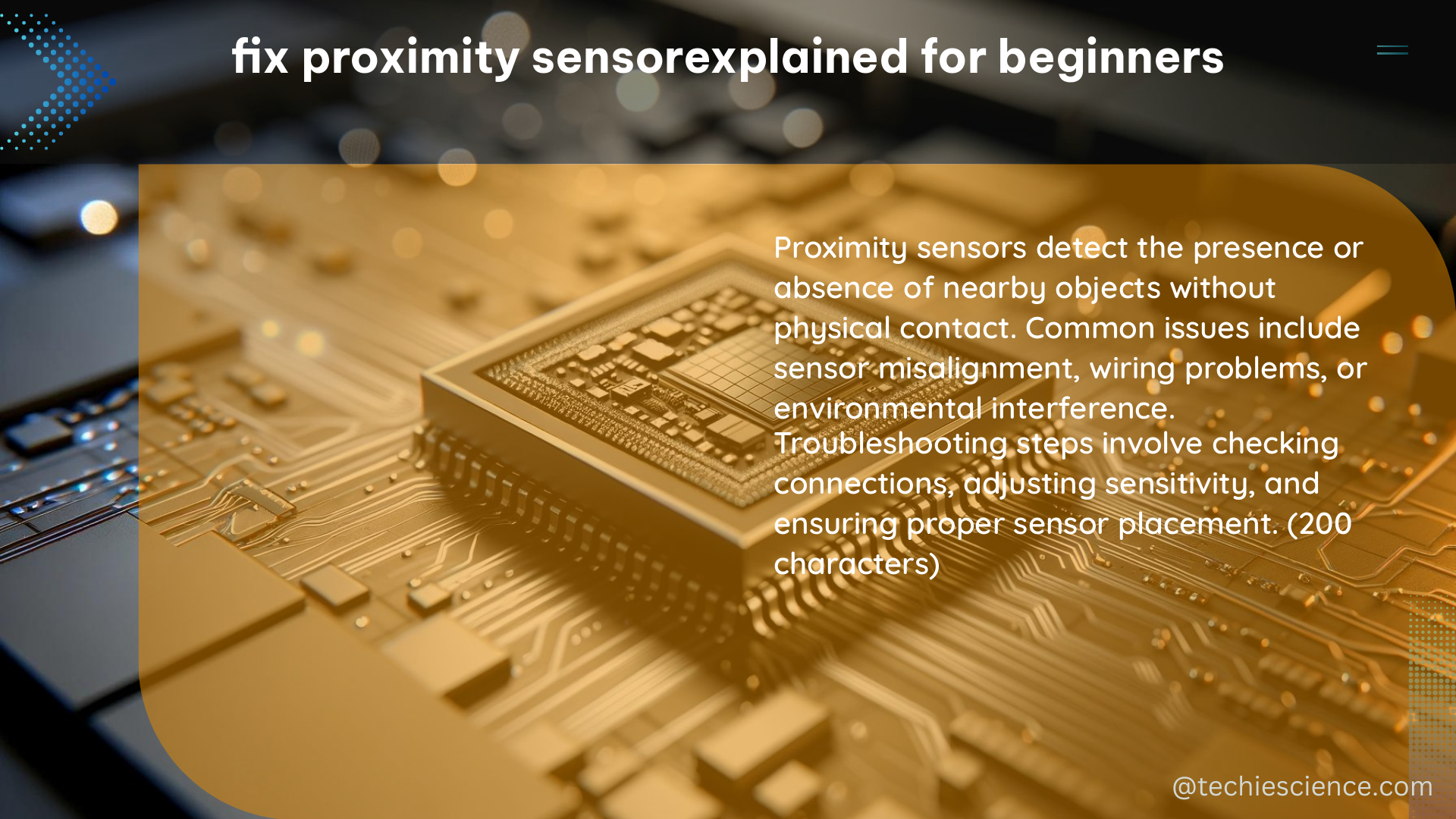Proximity sensors are essential components in modern smartphones, enabling features such as auto-brightness and call muting during calls. However, these sensors can sometimes malfunction, leading to issues like unmuted calls or incorrect screen brightness. This guide will help beginners understand and fix proximity sensor issues.
What is a Proximity Sensor?
A proximity sensor is a non-contact device that detects the presence or absence of objects within its sensing range. In smartphones, proximity sensors are typically located near the earpiece and are used to turn off the screen during calls to prevent accidental touches. These sensors work by emitting an infrared (IR) beam and detecting the reflection when an object enters the sensing range.
Technical Specifications of Proximity Sensors

Proximity sensors in smartphones typically use infrared (IR) technology to detect objects. The sensor emits an IR beam, and when an object enters the sensing range, the beam is reflected back to the sensor, triggering a response. The sensor’s range, angle, and sensitivity can vary depending on the device and manufacturer.
| Specification | Range | Angle | Sensitivity |
|---|---|---|---|
| Typical Smartphone Proximity Sensor | 1-10 cm | 30-60 degrees | 0.1-1 cm |
| High-End Smartphone Proximity Sensor | 5-20 cm | 45-90 degrees | 0.05-0.5 cm |
| Industrial Proximity Sensor | 10-100 cm | 60-120 degrees | 0.01-0.1 cm |
The proximity sensor’s performance can be affected by factors such as ambient light, object reflectivity, and sensor positioning. Proper calibration and maintenance are essential for optimal sensor performance.
Common Proximity Sensor Issues
Proximity sensor issues can manifest as unmuted calls during which the screen remains on, or incorrect screen brightness levels. These issues can be caused by various factors, including:
- Software Bugs: Bugs in the device’s software can lead to proximity sensor malfunctions, causing the sensor to behave erratically.
- Hardware Faults: Physical damage or wear and tear on the proximity sensor can result in sensor failure or decreased sensitivity.
- Debris Covering the Sensor: Dust, dirt, or other debris accumulating on the sensor’s surface can obstruct the IR beam, leading to sensor malfunction.
How to Fix Proximity Sensor Issues
Before attempting any fixes, it’s essential to ensure that the sensor is not covered by debris or dirt. Use a soft, dry cloth to gently clean the sensor and ensure that it’s free from any obstructions.
If the sensor is clean, the following steps can help resolve proximity sensor issues:
- Calibrate the Proximity Sensor:
- Some devices allow users to calibrate the proximity sensor manually.
- This process typically involves waving a hand over the sensor several times to recalibrate it.
-
Refer to your device’s user manual or manufacturer’s instructions for the specific calibration process.
-
Update Software:
- Software updates often include bug fixes and improvements that can resolve proximity sensor issues.
- Ensure that your device’s software is up-to-date to take advantage of these improvements.
-
Check for available updates through your device’s settings or the manufacturer’s website.
-
Factory Reset:
- If the issue persists, a factory reset may be necessary.
- This process erases all data on the device and restores it to its original factory settings.
-
Back up any important data before performing a factory reset, as it will erase everything on your device.
-
Contact Manufacturer:
- If none of the above steps resolve the issue, it may be necessary to contact the device manufacturer for further assistance.
- Provide the manufacturer with detailed information about the problem, including any error messages or symptoms you’ve observed.
- The manufacturer may be able to provide additional troubleshooting steps or arrange for a repair or replacement.
DIY Fixes for Proximity Sensor Issues
For those who prefer a DIY approach, the following steps can help resolve proximity sensor issues:
- Clean the Sensor:
- Use a soft, dry cloth to gently clean the sensor and ensure that it’s free from debris or dirt.
-
Avoid using any liquids or abrasive materials, as they can damage the sensor.
-
Check for Physical Damage:
- Inspect the sensor for any physical damage, such as cracks or dents, which could affect its performance.
-
If you notice any visible damage, it’s best to contact the manufacturer for further assistance.
-
Test with Alternative Dialer Apps:
- Some users have reported success using alternative dialer apps, such as the Nothing Dialer, which can help resolve proximity sensor issues.
- Try installing and using an alternative dialer app to see if it resolves the problem.
Remember, if the issue persists or you’re unsure about the cause, it’s always best to contact the device manufacturer for professional assistance.
References
- Fix for Poco F3 Proximity Sensor Issue
- Proximity Sensor Technical Guide
- Proximity Sensor Troubleshooting Video
- Proximity Sensors: A Comprehensive Guide
- Proximity Sensor Performance Analysis

The lambdageeks.com Core SME Team is a group of experienced subject matter experts from diverse scientific and technical fields including Physics, Chemistry, Technology,Electronics & Electrical Engineering, Automotive, Mechanical Engineering. Our team collaborates to create high-quality, well-researched articles on a wide range of science and technology topics for the lambdageeks.com website.
All Our Senior SME are having more than 7 Years of experience in the respective fields . They are either Working Industry Professionals or assocaited With different Universities. Refer Our Authors Page to get to know About our Core SMEs.